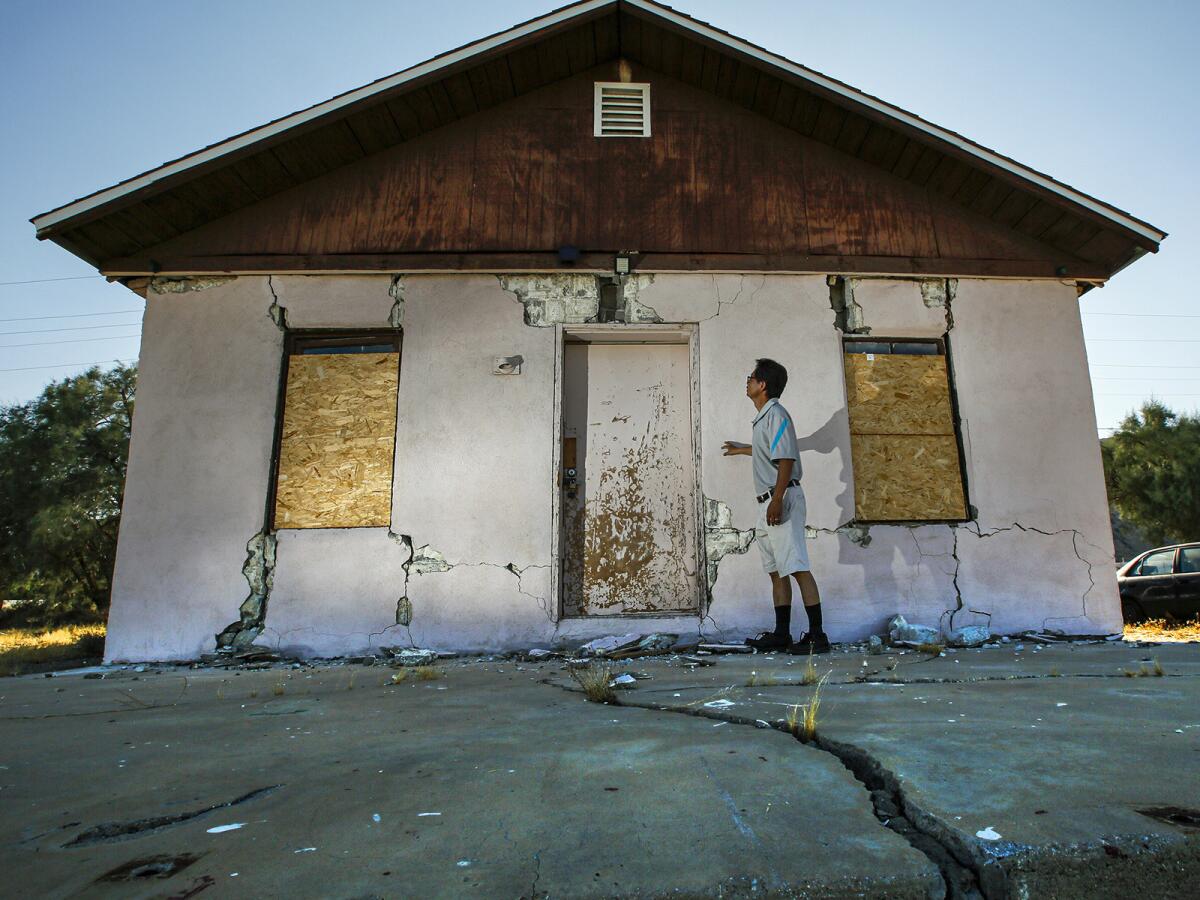11% chance of another huge earthquake in Southern California, scientists say

- Share via
The odds that Southern California will experience another earthquake of magnitude 7 or greater in the next week are now nearly 11%, according to preliminary estimates from seismologists.
And the chances that a quake will surpass the 7.1 temblor that struck near Ridgecrest on Friday night are roughly 8% to 9%, said Caltech seismologist Lucy Jones.
“There’s about a 1 in 10 chance that we could have another 7 in this sequence,” she said.
More likely is that the Owens Valley will experience another temblor of magnitude 6 or greater. The odds of that are slightly greater than 50-50, Jones said. And more quakes of magnitude 5 or greater are a near certainty.
“It would be extremely unusual if we didn’t have another 5” over the coming week, Jones said.
FULL COVERAGE: 2nd major quake in two days hits Southern California »
The 7.1 quake on Friday night was about 8 times larger than the 6.4 quake on Thursday morning, said Robert Graves, a seismologist with the U.S. Geological Survey in Pasadena.
Though such quakes would be more likely to occur in the next few days, the shaking could continue for quite some time.
“A magnitude 7 usually has aftershocks that last for years,” Jones said.
Jones said she could not recall a pattern of earthquakes in California where a 6.4 foreshock was followed by a 7.1 event, only to be followed by an even bigger quake.
Earthquake preparedness: What to do before - and during - a big one »
But that doesn’t mean it can’t happen, she cautioned.
“It is clearly a very energetic sequence, so there’s no reason to think we can’t have more large earthquakes,” she said.
The last time California experienced a quake of this size was in 1999, when the 1999 Hector Mine quake struck the Mojave Desert. There were minor injuries and no deaths.
The years since have been marked by an unusual earthquake drought.
“In California, we expect to have a magnitude 7 once every 10 to 20 years, and the last one was 20 years ago,” Jones said. “Think of this as a return to what California is supposed to be doing.”
Why the quake warning system didn’t work »
But she also said the activity near Ridgecrest is not likely to trigger any activity on the San Andreas fault.
The 7.1 quake occurred on the same fault system as the 6.4 temblor that is now being considered a foreshock. It was further away from Los Angeles, though still in the Owens Valley.
“This happened at the end of the zone that moved previously,” Jones said.
As of 11 p.m., it has already been followed by three quakes above a magnitude 5, 17 above a magnitude 4 and more than 70 that exceeded magnitude 3, Jones said.
Ridgecrest earthquake was intense. Exactly how strong was it? »
She said the fault is now likely to be 25 to 30 miles long.
“The fault is growing,” Jones said.
Thursday’s 6.4 foreshock triggered shaking in Ridgecrest of intensity 8. With Friday’s 7.1 main shock, the shaking intensity reached a 9, Jones said.
“My expectation is that Ridgecrest is having a pretty difficult time tonight,” Jones said.
“We don’t get the 7s very often,” she added.
More to Read
Sign up for Essential California
The most important California stories and recommendations in your inbox every morning.
You may occasionally receive promotional content from the Los Angeles Times.











